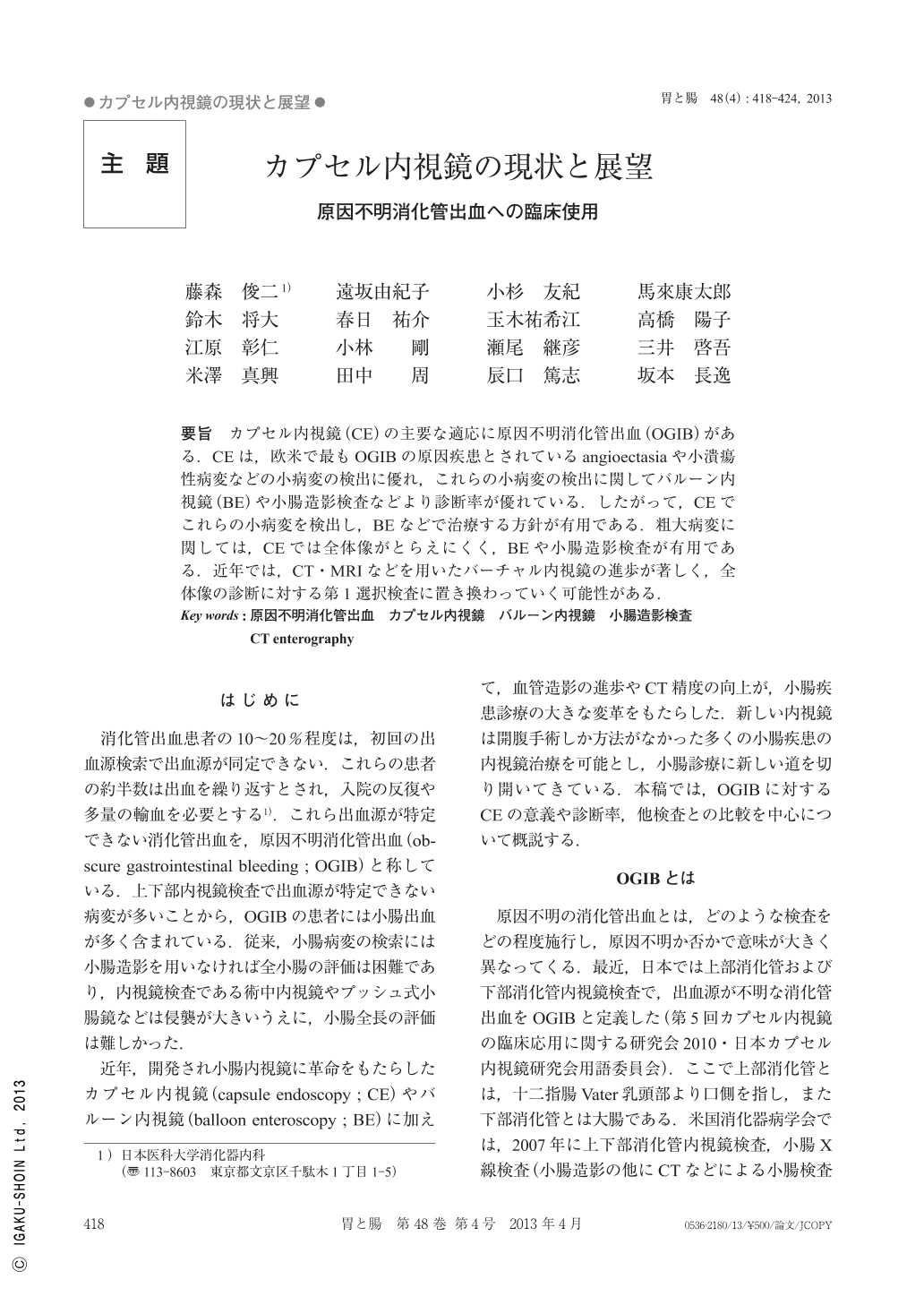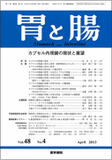Japanese
English
- 有料閲覧
- Abstract 文献概要
- 1ページ目 Look Inside
- 参考文献 Reference
- サイト内被引用 Cited by
要旨 カプセル内視鏡(CE)の主要な適応に原因不明消化管出血(OGIB)がある.CEは,欧米で最もOGIBの原因疾患とされているangioectasiaや小潰瘍性病変などの小病変の検出に優れ,これらの小病変の検出に関してバルーン内視鏡(BE)や小腸造影検査などより診断率が優れている.したがって,CEでこれらの小病変を検出し,BEなどで治療する方針が有用である.粗大病変に関しては,CEでは全体像がとらえにくく,BEや小腸造影検査が有用である.近年では,CT・MRIなどを用いたバーチャル内視鏡の進歩が著しく,全体像の診断に対する第1選択検査に置き換わっていく可能性がある.
CE(capsule endoscopy)is useful for detecting bleeding source of patients with OGIB(obscure gastrointestinal bleeding). Especially, CE is superiority to diagnose angioectasia which is the most frequent bleeding source of OGIB in the West, and small ulcerative lesion in small intestine. CE has the highest diagnostic yield to diagnose the angioectasia and small ulcerative lesion in the small intestine compared with other small intestinal examination methods included balloon assisted endoscopy, radiological enteroclysis or computed tomography. Therefore, detecting bleeding source by capsule endoscopy following balloon assisted endoscopy to detail examination and therapy is the useful practice guideline for patients with OGIB. However, capsule endoscopy is weak in getting a whole picture especially in large lesion such as tumor included submucosal tumor and in patients with Crohn's disease. Balloon assisted endoscopy and radiological enteroclysis are useful for getting the picture of the lesions in such patients with large lesions. Recently, computed tomography included virtual endoscopy and magnetic resonance imaging make remarkable progress to diagnose small intestinal disease. In the near future, the radiologic method may use first small intestinal examination to get the whole picture of patients with small intestinal disease.

Copyright © 2013, Igaku-Shoin Ltd. All rights reserved.


